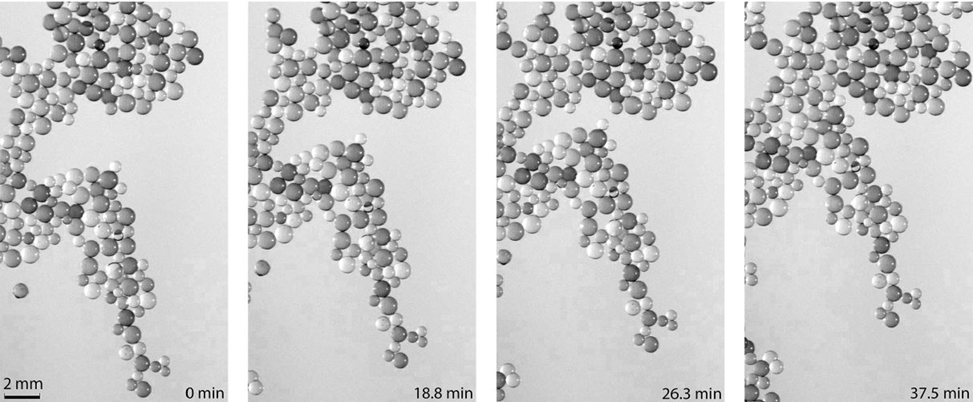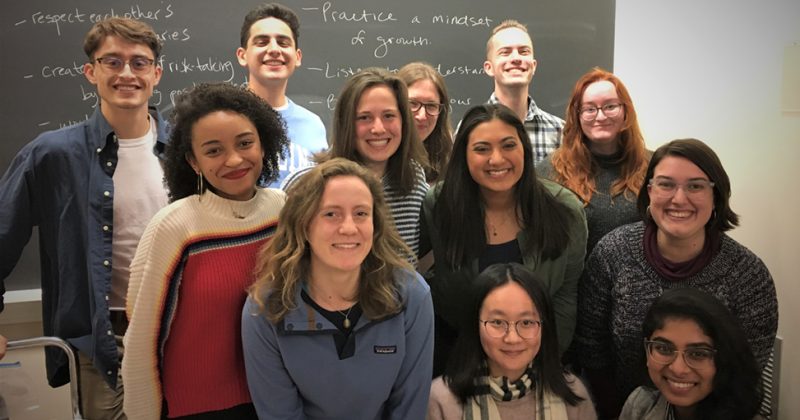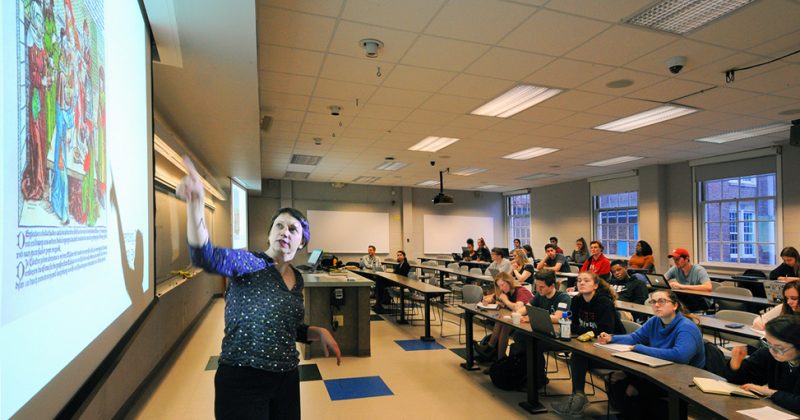
A time series showing the self-assembly of a collection of neutrally buoyant spheres suspended within a sharply salt-stratified fluid, as viewed from above.
A team of mathematicians from UNC-Chapel Hill and Brown University has discovered a new phenomenon that generates a fluidic force capable of moving and binding particles immersed in density-layered fluids. The breakthrough offers an alternative to previously held assumptions about how particles accumulate in lakes and oceans and could lead to applications in locating biological hotspots, cleaning up the environment and even in sorting and packing.
Ocean particle accumulation has long been understood as the result of chance collisions and adhesion. But an entirely different and unexpected phenomenon is at work in the water column, according to professors Richard McLaughlin and Roberto Camassa, along with their UNC graduate student Robert Hunt and Dan Harris of the School of Engineering at Brown.
In the paper, the researchers demonstrate that particles suspended in fluids of different densities, such as seawater of varying layers of salinity, exhibit two previously undiscovered behaviors. First, the particles self-assemble without electrostatic or magnetic attraction or, in the case of micro-organisms, without propulsion devices such as beating flagella or cilia. Second, they clump together without any need for adhesive or other bonding forces. The larger the cluster, the stronger the attractive force.
Like so many discoveries, this one began accidentally a couple years ago, during a demonstration for VIPs visiting the Joint Applied Mathematics and Marine Sciences Fluids Lab that Camassa and McLaughlin run. The pair intended to show a favorite parlor trick — how spheres dumped into a tank of salt water will “bounce” on their way to the bottom, as long as the fluid is uniformly stratified by density. But the graduate student in charge of the experiment made an error in setting up the density of the lower fluid. The spheres bounced and then hung there, submerged but not sinking to the bottom.
The next morning, the balls were still suspended, but they had begun to cluster together — to self-assemble for no apparent reason. The researchers eventually discovered the reason.
In highly stratified bodies of water, such as estuaries and the deep ocean, being able to mathematically understand the phenomenon may allow scientists to model and predict the location of biological hotspots, including feeding grounds for commercial fish or endangered species. Harnessing the power of the phenomenon might also lead to better ways to locate ocean microplastics or petroleum from deep-sea oil spills.
Published in the Spring 2020 issue | The Scoop
Read More

Mellon-funded undergraduate fellows develop new public humanities projects
The inaugural class of Humanities Futures undergraduate fellows began work…

Confronting antisemitism
“Topics in Jewish Studies: Confronting Antisemitism” is a new, one-credit-hour…

Transformational gift to fund new sports medicine complex
A transformational gift from Don and Billie Stallings of Rocky…

